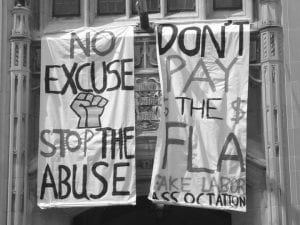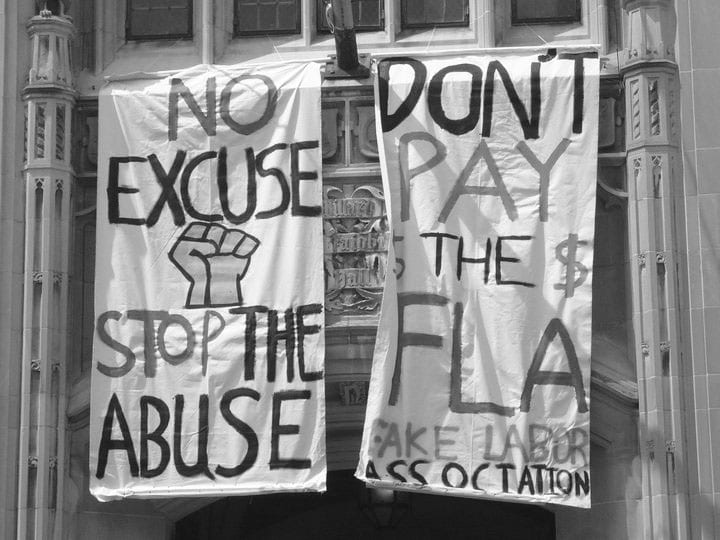By ALEC HUDSON – STAFF WRITER
Centre College has power few even realized it had.
While it is an academic power as an educational institution, it is also an economic power as a purchaser of school apparel for the bookstore and for other functions.
This apparel is not made here in America; it is made by an international garment industry that is controlled by a few huge corporations who contract factories around the world to make apparel as cheaply as possible.
How is it so cheap?
It is cheap not only because of low prices in raw material for the clothing but also because of low labor costs achieved through low wages, long working hours, and little-to-no safety inspection for the factories.
The low cost of labor may be good for the companies that profit from the garment trade, but workers themselves face poverty and life-threatening working conditions because of the labor practices of these companies.
However, there is something Centre College can do to change this: the College can unite with hundreds of other colleges and universities around the country and join the Worker Rights Consortium.
The Consortium, abbreviated WRC, is an independent agency that works with universities to monitor the labor practices of factories making garments for school apparel around the globe.

It sends its staff to the factories around the world and attempts to talk to workers away from the eyes of managers to get an idea of the working conditions and wages on which workers live.
But it does not simply request that colleges drop offending brands from its contracts; rather, it encourages colleges to pressure the companies that contract with unsafe or exploitative factories to improve their standards. Thus, the WRC doesn’t simply boycott offenders; it tries to make them better.
And these improvements cost the school little: the yearly membership fee for the college is $1,500, and the prices of apparel at schools that have signed the WRC have either only slightly risen or haven’t been affected at all.
But why is there a need for an independent monitoring agency like the WRC?
After all, a monitoring organization for the garment industry exists: the Fair Labor Association (FLA) does work similar to that of the WRC.
But the reality is that the FLA was founded as an industry-run counter to the WRC in 1999.
It has representatives of the garment industry on its Board of Directors and its assessments of the industry are conducted with workers who are monitored by their managers during assessment interviews.
Such practices show that the FLA is not only run by the garment industry, but that it doesn’t care about the well-being of workers, who they refuse to interview away from the eyes of managers.
One of the biggest examples of the failure of the garment industry and the FLA’s monitoring is the tragedy of Rana Plaza in Dhaka, Bangladesh on April 24, 2013.
An eight-story garment factory in the Bangladeshi capital that makes apparel for Walmart, Joe Fresh, and others collapsed, killing 1,129 people and injuring over 2,500.
These workers were only being paid around $52 a month, and the building was not even approved for factory operations.
After the accidents, non-governmental organizations and other groups met and created the Accord on Factory and Building Safety in Bangladesh, which companies can sign to pledge their support to safer conditions and better pay.
The problem is that many companies that contract factories in Bangladesh, including Walmart, Gap, Sears, and Macy’s, refused to sign and instead made their own safety accord that does not include independent worker input.
With actions like these, it is clear that the leaders of the garment industry care more about the safety of their profits than the safety of their workers.
Centre College has the power to say “no more” to these exploitative companies.
The college should stand up and join the ranks of schools like the University of Kentucky, the University of Louisville, Columbia, Harvard, Haverford, and hundreds of others who have decided to take on the garment industry and make it improve its conditions for its workers all over the world.
Then we as a school can wear our apparel with pride, knowing that those who make our clothing work safely and make a decent living.
